
HOUSTON – Most American wine lovers can easily name the three largest cities in the country — New York, Los Angeles and Chicago.
They might not guess Houston is No. 4 with 2.1 million people during the 2010 census, and now, there’s a growing thirst for Pacific Northwest wines deep in the heart of Texas.
“It’s fantastic,” Guy Stout, a master sommelier and one of the most influential wine industry executives in Texas, told Great Northwest Wine. “Oregon is the worst-kept secret, and Washington’s Cab blends and Syrah blends are crazy good. They are doing very well. Pinot Gris and Pinot Noir from Oregon are on every (restaurant) list here.”
And wine-savvy consumers have money to spend on Oregon wines, said Derek Bangs, regional brands manager for Willamette Valley Vineyards in Turner, Ore.
“There are a lot of oil-related companies in the Houston area, and disposable income in that area may be higher on average than in cities of similar size,” Bangs wrote in an email. “The majority of consumers seem to like the very rich, ripe, jammy style of wine, but there’s plenty of appreciation for the more food-friendly, mouth-watering Oregon wines.”
Mark Rayner, regional wine buyer for supermarket giant Kroger, said the work of Ste. Michelle Wine Estates continues to make an outstanding impression on Houston consumers.
“It’s always been about California, it’s always been about Napa and Oregon, but I think because of what Ste. Michelle has done with all of their acquisitions and fine portfolio, they are introducing our customers to regions and areas that they aren’t accustomed to,” Rayner said. “With Walla Walla and Red Mountain, there’s some phenomenal juice coming from out of there.”
Marty Clubb, director of winemaking at L’Ecole No. 41 in the Walla Walla Valley town of Lowden, Wash., holds a bit of a homefield advantage. He graduated from Texas A&M with an engineering degree and grew up an hour away from Houston in Beaumont.
“I’m a little embarrassed,” Clubb said. “I should be going down there and cultivating this. There’s a great opportunity for us to build a lot of business if I spent more time there.”
Sales in Houston may already have begun to spike for Mercer Estates. Last month, the Prosser, Wash., winery earned best red blend at Rodeo Uncorked!, the fundraising wine competition for the Houston Livestock Show & Rodeo and one of the largest judgings in the country at more than 2,400 entries. Jessica Munnell’s wines will be featured during the rodeo March 1-20 at the wine garden between the historic Astrodome and NRG Stadium, not to mention in retail locations before and beyond.
Market analysis for Northwest wine in Houston
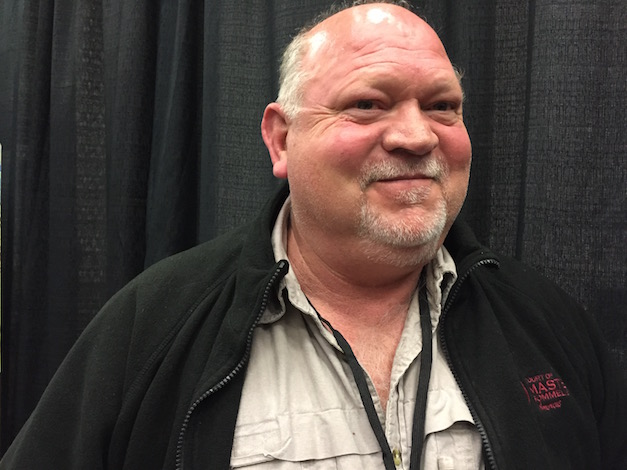
Ste. Michelle Wine Estates, the largest wine company in Washington state and a publicly traded company, shared its Nielsen market analysis involving Houston for the 52-week period ending Nov. 7. Data shows its Washington wine sales in Houston are up 12.5 percent. The strongest growth came from Washington Cabernet Sauvignon, which was up 18 percent, followed by Washington Riesling (15 percent) and Washington Merlot (8 percent).
Ste. Michelle Wine Estates’ Washington brands are up 4.2 percent, led by Columbia Crest’s middle tier H3 lineup (21.6 percent), 14 Hands (7 percent) and Chateau Ste. Michelle (1.1 percent).
“I think wine lovers looking for new wine-growing regions have realized the quality and value coming from the Pacific Northwest,” Barbara Jurbala, business development manager for Ste. Michelle Wine Estates, wrote in an email. “Even though wines have been produced in Washington state for a long time, they have gained increased credibility and recognition in the past 10 years. The style, quality and numerous 90-point wine scores from the region have caught our consumers and our wine buyers attention!”
Bangs said Willamette Valley Vineyards has seen an increase of 15 percent in the Texas market, selling more than 3,000 cases this year.
“Some of the larger wineries — A to Z, Erath, and King Estate/Acrobat — are doing extremely well there,” Bangs said. “Their wines are found in nearly every chain retail store, much like here in the Northwest. We don’t yet have that kind of presence in Texas — there’s still lots of room for growth. Remember that three of the top 10 largest cities in the U.S. are in Texas, and Austin is No. 11.”
Oregon wines in Houston
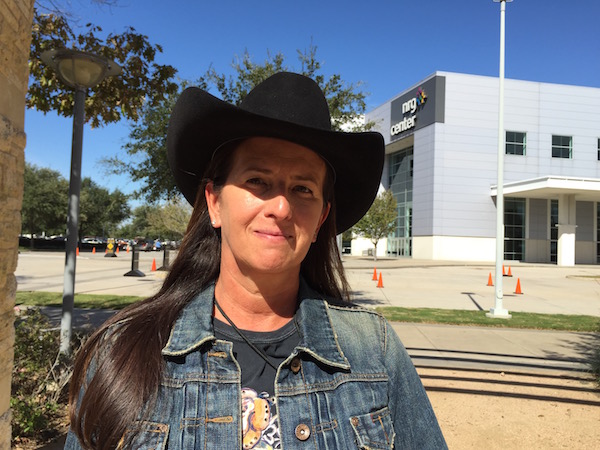
As one of the most influential figures on the Texas wine industry, it’s no surprise Stout is quite familiar with the Pacific Northwest. He’s the corporate director of beverage education for Glazer’s, a 106-year-old family-owned international wholesale beverage distributor covering 15 states and Canada. Glazer’s operates 22 offices in Texas, with four of those in Houston. Stout also judges wine competitions across the country.
“Adelsheim, King Estate and Willamette Valley Vineyards out of Oregon are big boys and just world-class wines,” Stout said with a deep, raspy voice. “Big shocker — Chardonnay out of Oregon is killer! Big comeback, big comeback because the clones have improved and the wines are better than I’ve ever tasted. David Adelsheim led that research, and he’s a great guy.”
While the large and historic brands have an advantage, spend three minutes with Stout, and it’s obvious he enjoys digging a little deeper into Oregon’s terroir and industry.
“There are little guys, too,” Stout said. “Lange Family. Geez, just crazy good. Girls love Jesse. And there are a bunch of beautiful estates that are just popping up. Goodfellow (Family Cellars) is one of them that’s just outstanding. They’ve got some Chardonnay that I would put Chassagne-Montrachet in a moment.”
Stout’s knowledge goes beyond brands and into the stylistic differences of West Coast Pinot Noir.
“Oregon is doing distinctive Pinot — not that Sonoma Coast Pinot that’s a cherry cola kind of character, and I love that — but more of a lingerine, more elegant, more balanced Pinot,” Stout said.
And yet, the versatility of Willamette Valley Vineyards’ portfolio helps explain why it is so successful in Houston as the Whole Cluster, with its cherry cola approach from carbonic maceration, and Estate Pinot Noir are strikingly different.
“Although our Whole Cluster Pinot Noir accounts for about half of our total sales in Texas, our Estate Pinot Noir has been growing by over 50 percent this year in Texas.” Bangs said. “It’s the No. 1- selling Oregon Pinot Noir over $25 retail in the United States, according to Nielsen data, and I think that it’s reached that point in Texas now, as well.”
Stephanie Earthman Baird, former general chairwoman for Rodeo Uncorked!, recently sold her wine importing and distributing company, BevCo International. Her portfolio included Washington brands such as Hyatt Vineyards, Vin du Lac of Chelan and high-end Oregon Pinot Noir producers Adelsheim, Alexana Winery and Penner-Ash Wine Cellars.
“I represented wineries from the Northwest,” said Baird, also a certified wine educator. “Dr. (Madaiah) Revana is from Texas, and he partnered up with Lynn Penner-Ash. Alexana is named after his daughter.
“Lynn Penner-Ash was always big in our market and visit the market,” Baird added. “We’ve had visitors here, so we’ve had the presence and people with the knowledge of it. There’s no reason the Northwest can’t keep building on that.”
Penner-Ash told Great Northwest Wine she plans on working the Houston market in April – a month after the rodeo and before the oppressive heat arrives.
Washington wines in Houston
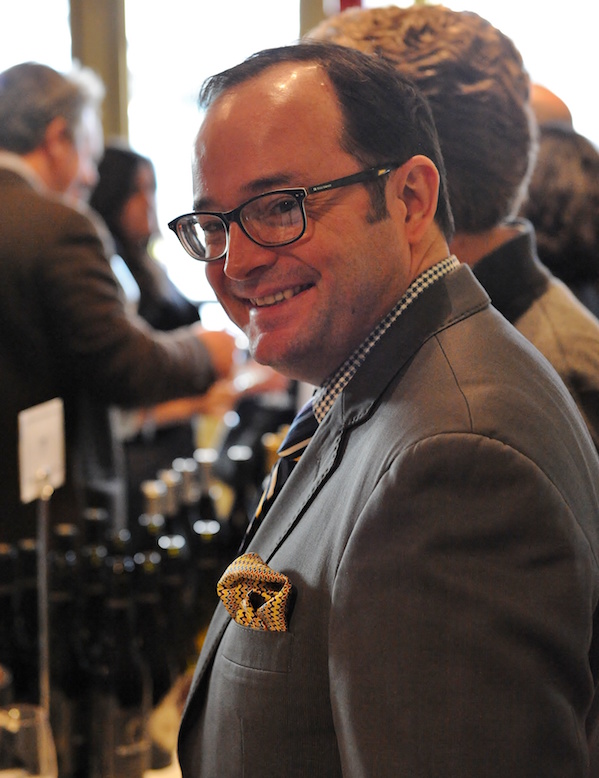
Ask almost anyone in the business of selling wine in Houston, and they don’t hesitate to refer to their corner of the South as “Cab country.” There’s a joke that the success of big Cabs in Houston is because they stand up to not only a thick steak but also a dip of Copenhagen.
“One could argue that Syrah or Merlot might taste better, but the market is predominantly about Cabernet,” quipped Erik McLaughlin, vice president for Seven Hills Winery in Walla Walla.
Cabernet Sauvignon is serious business in Texas, and 62 percent of Seven Hills’ Texas sales are in Cab.
“We make our living in Cabernet, which is nothing to be ashamed of,” McLaughlin said.
For L’Ecole, Clubb said he is selling about 130 cases a year in Houston through Stout’s company – Glazer’s. Most of that is split between the large-production Columbia Valley Cabernet Sauvignon and Columbia Valley Merlot bottlings.
“You are getting a lot of the big reds from Washington, Walla Walla specifically, that are doing great here,” Stout said.
In addition to L’Ecole, Stout mentioned Browne Family Vineyards of Seattle-based Precept Wine, Constellation-owned Hogue Cellars and Mercer as some of his favorites that are thriving in the Houston market.
“Columbia (Winery) is starting to kick in now that Gallo is behind it,” he added.
Stout also gives credit to his friend Bob Betz of Betz Family Winery in Woodinville – a Master of Wine – and fellow master sommelier Greg Harrington of Gramercy Cellars in Walla Walla for their work in Texas, which includes judging and speaking appearances in Dallas with Stout at TexSom, one of the largest wine industry conventions and most respected competitions in the country.
“They’ve helped put Washington on the map down here because of their energy and their personalities,” Stout said. “They have helped raise the tide.”
While both brands are priced at the premium tier, Stout applauded Columbia, Mercer and Boomtown by Dusted Valley for over delivering at their price points.
“And Columbia Crest has always competed. The price/quality ratio is not as bad as I want them to be because I don’t distribute their wines, but they are damn good,” Stout chuckled.
“Ste. Michelle – everything they touch is beautiful,” he continued. “I have Chateau Ste. Michelle Cab from the ’70s in my cellar. I knew them that long ago because I’m an old guy.”
So it didn’t surprise either Stout or Baird when Ste. Michelle Wine Estates was announced as the top region wine company of Rodeo Uncorked competition.
“Chateau Ste. Michelle is a great ambassador for the whole state of Washington and has a huge footprint here, so it’s a great piggyback for anybody else coming in,” Baird said. “If you ask someone about Washington – ‘Well, have you had Chateau Ste. Michelle?’ – they will say, ‘Of course!’ So then you can tell them, ‘Well, you’ve had Washington wine.’
“At that point, you try to get them to experiment with some other Washington wines,” Baird continued. “Chateau Ste. Michelle is great, but it’s getting people off of one great and getting them to have many greats. Have fun with it.“
In an astonishingly delicious bit of irony, both Rayner and Stout – standing next to each other after breakfast in the NRG Center – raved unprompted about one Washington brand in particular moments before the Rodeo Uncorked wine competition began.
“The other night, we drank a Mercer,” Stout said. “That was phenomenal.”
Rayner chimed in, “Yeah, that Mercer was a killer wine.”
In a news release issued a few days later, the Mercer Estates 2012 Reserve Cavalie ($42) was announced as the top red blend of the competition – a judging with results scrutinized by Pricewaterhouse Coopers, one of the nation’s most respected auditing companies.
Building brands in Texas
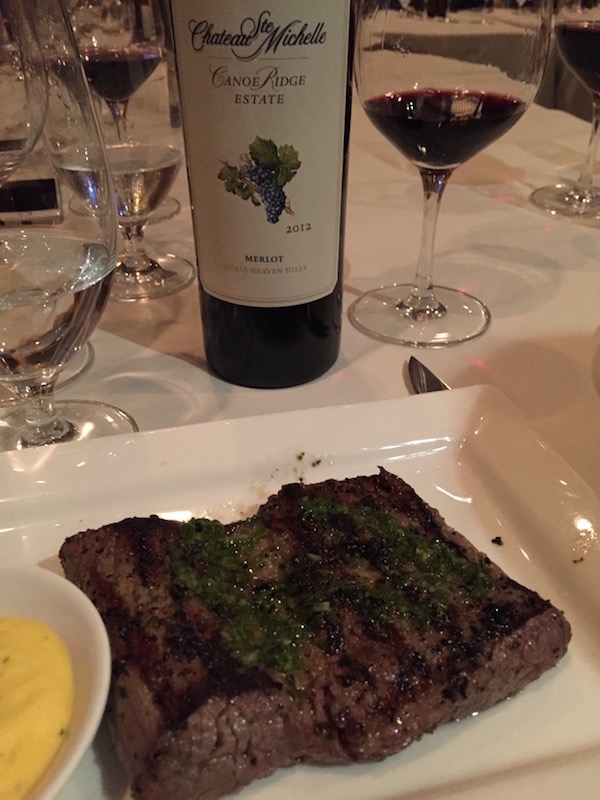
Years of entering wine competitions, face-to-face sales meetings and educating buyers and customers on the Pacific Northwest wine industry continues to help with awareness. The Houston Livestock Show and Rodeo’s international wine competition is dominated by wine buyers and distributors, and many of them have a working knowledge of Washington and Oregon.
“The quality/price ratio is getting better and vineyard acreage has improved dramatically, so grapes are coming into production that weren’t before,” Stout said. “Better clonal selections have come in. Better winemaking practices have cleaned up the industry. They are doing all the right stuff. I’m a fan. I get up there quite a bit — once or twice a year.
“Also, the quality of the region speaks, and that’s cool,” Stout added. “I like that. I grow grapes, so I know.”
Indeed, Stout serves on the Texas Wine and Grape Growers Association and owns Stout Vineyards in the Texas Hill Country American Viticultural Area with his wife, Kimberly. They grow Syrah, Grenache, Mourvèdre and Tempranillo.
Washington wines also have a strong presence at TexSom, formerly the Dallas Morning News Wine Competition. Rebecca Murphy, who founded the competition in 1985, operates her consulting business in both Dallas and Seattle.
“I know the Washington boys especially have been at TexSom in Dallas,” Stout said. “They hosted a fine event prior to the tasting. They are doing the right promotions, and they’ve done a great job of marketing.
“There is the Pinot Camp (in Oregon) and the Washington Wine Commission (Road Trip) tours, and I’m trying to get Texas to do the same thing,” Stout continued. “We don’t have the money, but we are trying.”
Rayner, who heads up the wine division for Kroger’s stores in Texas and Louisiana, said he recently ran a test program of Washington wine in his Houston market.
“It was received very well. There were even radio spots promoting those Washington state wines,” Rayner said. “The Merlots from Washington are coming out like Cabs.
“Folks are a little blown away, telling us, ‘I can buy a Merlot from Washington state and it tastes like a big Cab! So there’s a lot of credibility that’s starting to develop in our market.”
Texans are becoming more adventurous wine consumers. It is the country’s fifth-largest wine producer, home to 350 wineries. (Washington stands at No. 2 in size and counts more than 800 wineries).
“We’re also pretty proud about Texas wines, and we focus a lot on that as far as local, but as our customers are continuing to graduate to something different, new and interesting, they grab onto that and they want more — especially red blends, and Washington state is starting to produce a lot of those,” Rayner said. “That’s a category in the past six years that’s really grown. Blends are taking over Merlots. You’ve got to listen to your customers.”
Hurdles for Northwest wine in Texas
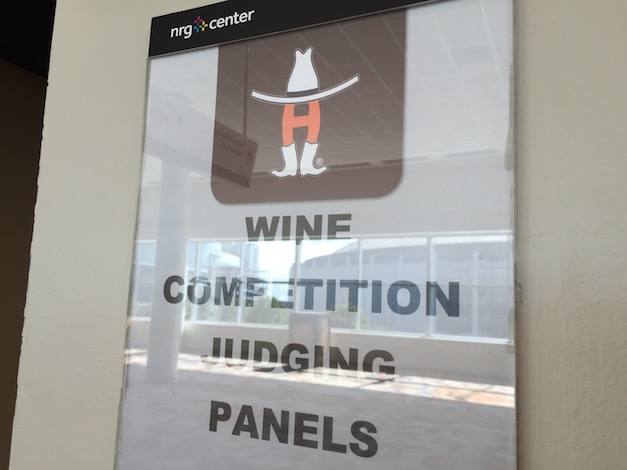
McLaughlin’s path to Seven Hills Winery included time in the 1990s as the corporate wine buyer for Cost Plus World Market. He’s been working for the McClellans at Seven Hills Winery for more than three years, and his trips to Houston – a part of the 80,000 miles his log on annual business – have gotten a bit easier over time.
“In talking with friends at other wineries and my own experience, it’s an enigma of a market unlike other places. There’s no common denominator to it,” McLaughlin said.
“Texas does drink an awful lot of wine. It’s a big market, and some wineries do inordinately well there,” he added. “If you are doing business there, you are doing a LOT of business. There is a hump, but there are bigger rewards for those who work it.”
One of his successes for Seven Hills came during one of his first trips when he and a sales rep went to Camerata at Paulie’s after a long day of calling on accounts. They sought something beyond the mainstream, and McLaughlin often reaches for a glass of bone-dry Fino Sherry at the end of a long day.
“Only wine geeks drink Sherries, and one of my favorites was by the glass,” McLaughlin said.
Their affinity for this Sherry attracted the attention of the proprietor, well-known Houston sommelier David Keck.
“He came and asked, ‘Who is this drinking all this?’ Nobody order this much Sherry!’ ” McLaughlin recalled with a chuckle. “We hit it off, and he later came out to visit the winery. He’s become a big supporter of Washington wine, and we ended up bonding over this rare glass of Sherry — or over several glasses.”
The Texas market is concentrated in the hands of distributors such as Glazer’s and Mid-State and retailers such as Costco, HEB, Spec’s and Total Wine & More.
“Although there are many independent liquor stores there, for the most part, they’re convenience stores with some specialty wine and liquor shops as well,” Bangs of Willamette Valley Vineyards said. “Due to the amount of competition between the large chains, especially Total Wine & More, Spec’s, Goody Goody, HEB and Kroger, the prices for Oregon wines are often very attractive (for the consumer).
McLaughlin said, “You’ve got to be in those chains and then call on the retailers and restaurants.”
Despite the thirst for Cab, some wine lists in Houston make plenty of room for Oregon.
“Certainly the chain restaurants are highly visible and seem to be everywhere, but there are truly world-class restaurants – and they’re very interested in Oregon wines,” Bangs said. “As Guy Stout pointed out, Oregon wines seem to be on every wine list; usually just a couple of Oregon wines, but some restaurants carry dozens of them. The really nice steakhouses in particular seem to have a strong presence of Oregon Pinot Noirs on their list.”
And McLaughlin said there’s a different strategy to marketing and selling in the Lone Star State.
“You go into and work Manhattan and the effects spiral out into the suburb markets like Westchester or Long Island,” McLaughlin said. “The effort in markets like Manhattan, Portland and Seattle affect the entirety of the market, whereas in Texas each market is an island into itself.
“Austin is a very different wine scene,” McLaughlin continued. “Cabernet is king, and in Texas in general, but Austin has more of an appetite for trending things, unusual varieties and cool-climate wines.”
However, McLaughlin pointed out, “There are pockets of wine geekdom in Houston, and there’s a great sommelier culture with an underground wine scene that’s into grower Champagne and Jura, but they make their living Cabernet to customers.”
Heat can make wine sales tough in Houston
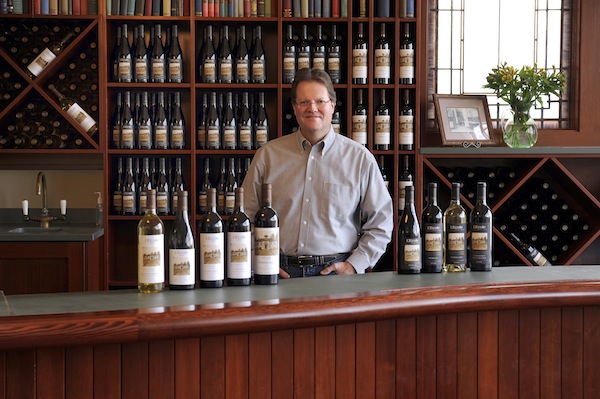
Idaho winemaker Tim Harless was a pilot in Texas who met his wife from the Bay Area because he stood out at a summertime party in Wichita Falls as the guy who brought Sauvignon Blanc rather than beer. He and Dr. Helen Harless now grow and make Sauvignon Blanc at Hat Ranch Winery in Caldwell. And oppressive daytime heat throughout much of the year explains why Shiner Bock beer remains so popular in Texas. Just ask Clubb at L’Ecole.
“There is a lot of potential there, but because it’s so hot there, wine consumption is lagging in terms of other spots in the country,” Clubb said. “You just don’t think about drinking wine when it’s 105 degrees with 100 percent humidity.”
And there’s a great deal of wine education yet to be done.
“I often hear Willamette mispronounced, Pinot Gris, too,” Bangs said. “They’ll still include the s. However, this happens throughout the U.S., including in Oregon and Washington.”
Clubb gets back home to Texas a couple of times a year to visit his mother and see his siblings. Next year, he may get some help on the road from his wife, Megan, who resigns as CEO of Baker Boyer Bank on Monday after 25 years. Her family co-founded the Walla Walla bank in 1869, and her parents launched L’Ecole No. 41 in 1983. Megan’s mother, Jean Ferguson, made the first wines, and Marty took over in 1989.
“I grew up hunting and fishing and went to A&M,” Clubb said. “It’s easy for me to fit in there, and there is a lot of opportunity for us, but I find myself spending all my Texas free time with my aging mother and not focusing on wine work.
“Fifteen years ago, we played the A&M angle hard and it did generate results, so it’s probably time to work on that again” Clubb added.
The Aggie might even consider tossing in “Gig ’em!” a time or two while calling on those accounts.

Leave a Reply